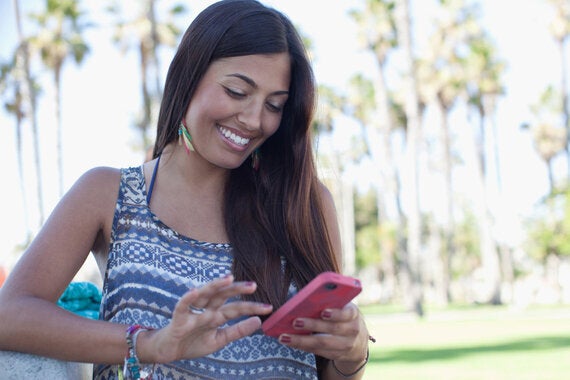
Photo: Sam Edwards - Getty Images/OJO Images RF
A new study published in the scientific journal Obstetrics and Gynaecology says that most period and fertility tracking apps for use on mobile phones are inaccurate in terms of calculating the fertile window. Data from 20 web sites and 33 apps were collected and of these, only one website and three apps predicted the fertile window accurately, according to the researchers.
The scientists used a standard 28 day cycle for their testing. They told the apps that the first day of the period was 1st January 2015 and that the period was 4 days in length. They then assessed what the apps predicted the fertile window would be, and the day of ovulation, in the subsequent cycle. The researchers assessed that the day of ovulation would be day 15 and that the fertile window would be from Day 10 to Day 15. 80% of the websites and 87% of the apps correctly predicted the day of ovulation but only one website and three apps correctly predicted the fertile window. The study was limited to websites and apps that were free to use. Incidentally, it's perfectly possible and would be perfectly 'normal' to have a 28 day cycle in which you did not ovulate on day 15, so don't be put off by that assumption.
More and more apps for tracking fertility have been coming on-stream in the last few years. Back when I first trained as a fertility awareness practitioner there was no such thing and we all used a pen and paper, which work perfectly well. But mobile phones are an intrinsic part of our daily lives now and being able to carry your fertility calendar in your pocket and update it so easily is undoubtedly helpful.
The sympto-thermal method of fertility awareness uses both basal body temperature and cervical mucus signs to build up a picture of the fertility window. The best apps and websites are based on the solid foundation of this method and don't just rely on making predictions from calculations based on the history of previous cycles. Some people are blessed with a regular 28 day cycle and ovulation is always on day 14 - the classic text book cycle. But a huge proportion of women's cycles deviate from that in some way. Not only might you have a cycle that is 26 or 27 or 34 days long but also your cycle might vary from one month to the next. So relying on an app that makes predictions based on what's happened in the past is no good. What you need from a fertility tracking point of view is to know what's going on prospectively. Also, beware of doctors telling you when you should be fertile! Everyone is different.
The key to identifying whether or not you are fertile is to notice what's going on with your fertile cervical fluid. If you want, you can then add in extra information about your basal body temperature. But remember your temperature will usually only tell you that you have already ovulated, not that you are about to, so it isn't all that helpful from a predictive point of view. The original and best resource for everything related to fertility awareness is Toni Weschler's book and website, Taking Charge of Your Fertility - all the tools on the website are free to use.
So use an app by all means to help you keep track of your cycles, but don't assume that the app knows better than you when you are fertile. Pay attention to your own body and don't be bamboozled by the gadget. When choosing an app, choose one that allows you to input information about your cervical fluid and temperature (even if you don't use that function) as well as the dates of your previous periods. And remember, if you have fertile cervical fluid, you're fertile that day whether your app agrees with you or not.